Edited by John Reppion
http://www.spiritsofplace.com
Book review by Tommy Calderbank
It begins with a spiral.
I’d been looking forward to this for a while, ever since its editor had been sending mysterious tweets referring to something called ‘Project Loci’. John Reppion is his name, of this parish and a writer of some reknown.
I was at the original event that inspired this book.
In April 2016, John put on a remarkable 1-day symposium/ritual at Calderstones Mansion. ‘Spirits of Place’ explored the mysteries of the eponymous stones and themes thereof. Archaeologists, psychogeographers and writers (Ramsey Campbell amongst them), held us in rapt attention all day, as one by one they peeled back layers of meaning, excavating prehistory and set us on a profound and fascinating journey into the very fabric of where we were. Of who we were. And how those two are intrinsically linked.
Fast forward a mere 7 months, and unbelievably, the book is published. Basically, it’s taken me a lot, looooot longer to review the thing than John and Co took to produce it.
From concept to delivery of a very high quality end product, that’s some going. For that alone, this reviewer doffs his cap to the editor, his publisher, and the 12 outstanding contributors. To the book, then.
The first bite is with the eye – the cover art and design by Pye Parr is beautiful and haunting. As John says in his introduction, the core concept is a simple one: “stories are embedded in the world around us – in metal, in brick, in concrete and in wood. In the very earth beneath our feet.” The themes common to all the essays is the way our identities and beliefs are embedded in our surroundings; how we interpret and reinterpret ourselves in certain places.
The visual style of the book is lovely, with the titles looking like woodcuts.
The first essay ‘I Have Trod Such Haunted Land’ is a belter. Written by Gazelle Amber Valentine (from US sludge metal band Jucifer), it aches with loss – of land, of culture, of men, women and children lost in the hills. Closed factories, abandoned Olympic training centres, Ground Zero. She feels the emotional in a way hard to contain, often triggered unexpectedly, like food, for example: “To eat in Eastern Europe is to trace its history, written like Braille for the tongue.”
Her tale of performing the song ‘Work Will Make Us Free’ in the former factory which made furnaces for Nazi Concentration camp shows how she is particularly sensitive – and properly responsive to – historical trauma. She evokes “a sense of peace” when she’s home in Florida, “when I am somewhere my bones belong”. She beautifully describes the way in which she as an artist becomes almost a vessel for spirits: “I feel utilised by nebulous outer forces of character and place”. Feeling an intuitive empathy so deep and powerful, she becomes that person or place, to the point of almost becoming possessed. In speaking on ‘The Shape of Texas’, she asks: “Can we infer that spirits of place, augmented by powerful emotions of events centered there, are so strong as to be capable of transcending physical space for a willing and empathic receiver?” In ‘Time Seems Stronger In A Redwood Forest’, where the inhabitants are between 1, 000 to 2, 000 years old, she says “Among redwoods, I feel my place in time’s continuum shrinking to insignificance”
In ‘The Palace Built Over A Hellmouth’, Maia J.Perez Cuervo tells the tale of King Philip II of Spain who’s life’s plan was to build “a royal residence that would also be a pantheon, a monastery, a library, a museum and a centre for studies. Only problem was the PLACE. The area called El Escorial not far from Madrid, where an ancient legend said that the Devil himself had lived in a cave there, after he was expelled from Heave. In 1561, experts travelled to make a final decision. “It seems as through the chthonic currents managed to seep through the soil”, driving the inhabitants to “madness and perdition”.
The way the cross looms at the so-called ‘Valley of the Fallen’ where her dad says “That’s where Franco and his pals are buried. We’re not going there”.
She finds the sight disturbing, “like a monstrous shadow of the past creeping over us, triumphant”. Architecture as arbiter of place, evoking biblical stories. Statues that look to where treasure has never been found.
The legend of the hellmouth – what’s in a name? – ‘El Escorial’, whose etymology could be linked to oaks and mines. The area had been rich mines of silver and gold, which probably gave rise to the legend of the hellmouth.
Was the nearby collection of carved granite platforms called The Seat of Philip II, an observatory for the king to supervise works, or a pagan altar for human sacrifice? Las Pisada del Diablo nearby is what looks like a single impression.
Sightings of Cerebus, monstrous guardian of the Greek underworld, were tuned into the Black Dog of El Escorial which – like its counterpart the Black Shuck – was a portent of doom. This palace of the dead, the pantheon of the kings, has 26 marble sepulchres, and over 7, 000 relics. The bizarre concoction of Catholicism, morbid superstition and fear of hell defines so many lives.
In 1585, work begins on the lab of El Escorial, alchemical research, led by Richard Stonyhurst, developing potable gold – the elixir of long life – to restore the king’s health. The library sounds fascinating, organised in 2 sections, a public one and a secret one, like in the Vatican…
Cuervo leaves us with a haunting image of Philip II dying in agony, kissing relics and contemplating his collection of Hieronymous Bosch paintings, including ‘The Garden of Earthly Delights.’ Even though he was surrounded by holy objects and his holy men, here – in El Escorial – he was also closer to the abyss than he would been anywhere else…
I’m left with a potent sense of the role religion and superstition play in creating our Spirits of Place. Each essay, incidentally, is prefaced with the most beautiful black and white pictures and prints. Here, it’s Bosch. Haunting, evocative, mysterious.
Then it’s ‘A Compendium of Tides’ by the mighty Warren Ellis. Great opening line: “There’s a ship full of bombs out here.” If the contents of the SS Richard Montgomery – which went down in the Thames Estuary in 1944 were to go off, “every window on the Estuary would shatter, we’d score at least a 4.5 on the Richter scale, the sea bed would get a new 20ft deep crater, and a tsunami 16ft high would rush to shore and into London. The Mansell Sea Forts, stilted defence towers. A hauted coast, full of graves.
Nelson’s body after Trafalger, entombed in a cask of brandy. Mucking Marshes. “We are an oddly literal people out here”. Foulness. What a name…sounds like a borough of Mordor…sealed military test site. His description of it: “like one of those drowned towns whose rooves and spires occasionally surface from a drained reservoir in summer. Submerged by state security”. Reminded me of the drowning of Capel Celyn, a village in Wales which was flooded to slake Liverpool’s thirst. Warren tells us why The Broomway is the most dangerous walk in Britain, and how it got its name. This is a repeated theme throughout Spirits of Place: how places move, and how names are changed. Names like Thunder’s Clearing, Dark Lane school, Hadleigh, Screaming Boy lane, are “old English words, speaking to the way Britain assimilates and mutates.” He also brilliantly brings in the idea of radio and sound as “another ghost map” laid on top of all the others. Sound embedded in the ground. The ‘electronic voice phenomenon’, the sonics of voices speaking beyond death. Songs from the Other World….
He ends with an evocation of Cunning Murrell, last of the Cunning Folk, hedge witches of old England, who legendarily predicted the hour and minute of his own death.
After the sound of London from Warren comes the taste of the Philippines of Kristine Ong Muslim with her contribution ‘Agonies and Enchantments’. Her opening line is searingly honest: “Through my body of writing, I contribute to cultural amnesia.” She sees exorcism as evidence of backwardness. In the section ‘Otherworldly Tenants in the House’, she introduces the idea of a ‘stigmatised property’, such as one where a violent crime or suicide has occurred. Her Grandma, before her peaceful death, kept windows shut, as long-dead relatives were calling out to her. Kristine mentions ‘psychopomps’, escorts to the afterlife: “that’s how we cope when the scale of the unknowable is tipped against our favour.” Kilometre 30 is a road with a reputation, particularly for ghostly hitchhikers. We can blame reflections, shadows or superstitious small-mindedness, BUT “I believe…a violent death can warp the place where it transpired. The place holds this dark energy forever…the distortion is in the manifold of reality whose nature is not completely known to us.”
In ‘The Pond, The Baby, and the 2nd Law of Thermodynamics’, she describes seeing “a baby-thing, lying in bed, tiny hands holding a piece of foil that made a sound, a crisp ‘tsk tsk tsk’ and hoofbeats on the floor…” GENUINELY uncanny. Her explanation intrigues: “drastic electrochemical changes in my brain can temporarily alter my immediate environment. The alternative is just too disturbing for me to contemplate.” Kristine teaches me something I didn’t know, that humans can only see roughly between wavelengths 390 and 700 nanometres, which emphasises the limits of our perceptions when dealing with this stuff. She ends with a real ‘we’re fucked’ eco-apocalypse realisation. It is not going to get any better, our mistreatment of the environment, of animals, of each other.
In ‘The Great Mongoose’, Vajra Chandrasekera speaks of the ‘complicated etymology of Rajagiriya (Greater Columbo). Emerging from a (British Occupied) colonial past, its only 100 years old. It used to be known as Yakbadda ‘the Devil’s Forest’. He raises an interesting point about property owners and colonial masters having streets or neighbourhoods named after them; this in turn contributes to a sense of dislocated, alien place. Vajra puts this legacy of colonialism beautifully: “Looking back and not looking back are both dangerous new, leaving us stuck in a side-eye from a half-turn.”
He consistently comes up with great turns of phrase: “We have continuity with everything that our bodies will ever be or have already been, shit and stars alike.” “Information is the only thing that can be lost in an imperishable universe. Mind is the only thing that truly dies.”
Superb.
Joanne Parker’s ‘Death Imitating Art At Castle An Dinas’ unveils a Cornish world both strange and unearthly, a “high land of twisted tors and peaty pools…wreathed in myth and folklore.” The Iron Age hillfort has a particular hold on her imagination. Barrows around the fort suggest a Bronze Age use, and other aspects suggest an even earlier, Neolithic use. So THIS place has been important to people for a loooong time, “a place where trade, ceremonies and rituals took place.” She recounts how this castle could be Dimilioc, a key venue in the Arthurian legends where Arthur’s father Uther Pendragon conned his way into his beloved’s bed and sired the future mythic monarch. She explores how the mythology of areas grows, as competing claims to fame emerge. And how ‘traditions’ can be very dark indeed. Gibbeting people alive, for example. Perhaps not surprisingly for a hillfort, death stalks the place (the tale of the starving prisoner ravenously eating candles is particularly memorable). I loved her description of someone of dubious claim begin ‘not a man averse to a fairy or two’. She also nails a major theme in the book when she notes insightfully: ‘Sometimes stories can give to a place a spirit more indelible than any history.’ How crimes of passion, centuries apart, can be woven into local folklore, twisted, embellished and handed back as truth, turning a sanctuary into a haunted place.
‘Malleus Speculis’ by Mark Pesce begins by exploring how psychoanalysis and virtual reality can be brought together to help our unconscious life at the beginning of the 21st century. His thesis is that money ‘found its ideal partner in the virtual world, each making the other seem more real that either could ever be on their own’, and that through this symbiosis, the virtual colonises the real through our smartphones. Reality simply becomes ‘reflections off funhouse mirrors’, amplifying genuine emotion in a growing cycle of outrage and sympathy, till we are emotionally over-stimulated ‘hypnotically entranced by our own shadow play’. Pesce has a great turn of phrase: he describes the overcrowded virtual world as ‘a billion-throat chorus of chaos’. In seeking dreams in an unreal world, we are ‘hollowed out by our hungry ghosts’. The overall effect of this essay is dizzying, the lines between our inner world and the outer getting blurrier by the day. The trial, same as it ever for our species – now amplified through ubiquitous technology – is between illumination and annihilation.
‘Becoming Elf, Becoming Witch’ by Bryndis Bjorgvinsdottir, explores Icelandic elf-belief, which like other beliefs in the supernatural exists even if the subjects of such belief do not. She is more interested in what these beliefs say about us, and the effect they have upon environment and identity. Considering the case of an infamous historical serial killer who was called a vampire, she begs the question: ‘are tales of supernatural beings perhaps originally accounts of people?’ Mediaeval texts reveal that ‘an elf can be a ghost, a ghost can be a troll, a troll can be a sorcerer and a sorcerer can be a man.’ Bryndis supposes that these might describe ‘aspects of our humanity that we wish to suppress, by naming these aspects unnatural or alien.’ By storytelling we project onto these beings what we don’t want to find in ourselves or don’t understand. She touches on JRR Tolkien’s fascination with elves, and their ambiguous nature, exemplified by Galadrial’s temptation being offered the Ring of Power. Interviewed by a Japanese film company over the removal of elf-stones from the path of a road development, it dawns on Bryndis that ‘I had myself been transformed into an elf in the eyes of the members of the film crew’, as they encourage her to lean on the stones and knock on them. ‘Like the ‘witch’ that buries her nose in books, learns about the world and mediates her knowledge to others – but ends up becoming one of ‘them’….’
Iain Sinclair opens his cracking ‘Palermo Deathtrip’ with an appropriate Jack Kerouac quote, and drives along his inimitable road with crisp, short sentences. The mood is atmospheric, his turns of phrase superb. ‘That mazy passage out of time and into myth’; ‘there are fish that flare unseen in fathomless depths.’ Master storyteller that he is, Sinclair weaves multiple narratives, picking and leaving threads of potential stories. Half the fun is seeing which he’ll spin. Broadly speaking ‘this story is about death, cameras, crosses and confessions. It is about the dead preying on us…’ There’s real originality in the way Iain writes: a flight is ‘a twilight of shared viruses’; the content of iPads and iPhones are ‘shrivelled movies’. He writes about B.Catling’s extraordinary trilogy of ‘fiercely possessed’ novels ‘The Vorrh’, which having read myself, agree with Alan Moore that it’s ‘easily the current century’s first landmark work of fantasy’.
A set of large photographic prints, by Ian Wilkinson, of the Capuchin catacombs sends him, unstoppably, on his commission: Palermo Deathtrip. He describes his flight as ‘a twilight of shared viruses’. Historic figures as different as Oscar Wilde and Benito Mussolini have walk on parts, but nothing like the prescence of the Palermo mummified corpses, his ‘book of secular saints’, captured in these prints. The have a ‘tremour’. “You can hear them and feel them touching you. But you have to speak ‘bird’ to understand what they are saying.” Birds representing the soul after death, or symbols of bad luck and war. He quotes the writer Robin Cook as saying: “You can’t keep the dead out….They come anyway. They rest on your shoulder, whatever you’re doing, they weigh nothing…”
He goes back to Palermo, wanting to pay respects to B.Catling’s ‘The Vorrh’, and telling the story of the poet Roussel, and his eventual edemise. This truly extraordinary novel had its origins in 1973, as a sheaf of poems, and slumbered for decades before being born as ‘the dangerous book’ or ‘fractal museum’. The rest of this extraordinary story meditates on mortality and our burial rites, the power of the image and the courage demanded to make them.
‘City of Palaces, City of Ghosts’ by Silvia Moreno-Garcia begins by exploring the development of Mexico City through the 20th Century. She vividly evokes life in the vecindad, the tenements of the time which became popular ‘as a spot for the lower classes’. Made up of small dwellings which share a hallway, they are ‘complete with the ubiquitous lavaderos, the public washing area made up of stone sinks.’ In addition to being a centre of the community, it was also the only place the children could play, a concrete playground. Many have gone, now, in the rush for modernisation. Yet despite the best efforts of the planners, developers and politicians, the spirit of the place persists. Streets with legends attached to them…Her tale about La Calle de la Quemada (The Street of the Burnt Woman) stretches the definition of ‘love story’ to burning point. The names of places give a clue as to their histories: ‘Devil’s Alley’, ‘Alley of the Toad’, ‘Alley of the Dead Man’. Silvia combines legends of the city with her own beginnings in the world of magic. She details the spells and rituals she used, and how their outcomes fuelled her own creative expression. Key buildings in the city haunt the culture and popular imagination. Places like the Black Palace of Lecumberri, the feared ‘panoptic’ prison; the Bar La Opera, where Pancho Villa supposedly fired into the ceiling; the Latin American Tower, the city’s first skyscraper and a hideous symbol of modernity, so ugly it survived a massive earthquake; the beautiful Chinese Palace and Cine Teresa movie theatres, which transported you to a golden age of Mexican filmmaking. The changes the city goes through, lamentable as a lot of them are, cannot what once was. Can’t erase the ghosts. The old ghosts, and the ones still to come…
‘Stealing The Light To Write By’ is Damien Patrick Williams’ exploration of his practicing and studying magic, and the role of the Trickster archetype. He talks movingly about his mentor Lorraine, who sounds like an amazing person. She was principle of the small school he attended, which she, the faculty and the first graduating class built together. Through her ethos and practise, ‘a Great Work of Refinement’, she helped him change his life. He turns over the idea of the Internet-as-Place, one requiring a shamanic guide to navigate the Underworld of 1’s and 0’s. Then it becomes a haunted house story, with a series of corroborated spooky happenings. Then he combines his perspective on magick, continental philosophy and comparative religion, binding magick and technology together (the roots for both are in the concept of ‘craft’). He begins to see synchronicities within synchronicities, signs and symbols everywhere (especially ravens). Although he has a lively writing style, something in this piece didn’t connect with me. Too much emphasis on his own academic journey, maybe, not enough of the spiritual one. It’s a personal preference, I suppose. That said, his thoughts on language as technology, and it being ‘at a fundamental level, the oldest magic we have’, are insightful.
And finally, the one I’m most excited for, ‘Coal Memory’, by Alan Moore. The thing I always love about Alan, apart from his exquisite writing style, heavyweight substance and real human warmth, is how funny he is. Speaking of divining spirits of place in the 18th century, grimoires of the day recommends the ritual mistreatment of a ‘young white piglet’ in order to get the spirits in question to speak through the animal, which is then ‘unfortunately stabbed, though these days vegetarian options are available. His main thesis is that ‘our sense of whereabouts is always a construction, if we’re physically there or if we’re not, a quilt of media stereotypes, popular perceptions, reminiscences, personal observations, bleached out history – a geography entirely of the head. He takes as an example the case of Newcastle. Long time fans of Liverpudlian magician John Constantine will know that ‘Newcastle’ was referenced in Hellblazer, as ‘an ominous bass note struck in an urban warlock’s backstory, the hint at an occasion and a city where the magic goes disastrously wrong’. In 1995, Alan was invited to perform in the city, on his birthday, by Newcastle Arts organisation Locus+. His site-specific magical performances focussed entirely on the place and time of their manifestion (eg: The Highbury Working, etc), is a strong and underrated thread of his work. He begins this particular one improvising with his long-time musical collaborators Dave J and Tim Perkins. Then, over summer, his mum sickens and dies. ‘Her personal effects include the preserved birth-caul of her older brother, Jack.’ A birth caul is a membrane that covers the head of some newborns, quite rare. Highly prized by seafarers who believed owning one granted immunity from drowning. Also used by the legal profession as a precursor to wigs. In Alan’s hands (along with the musicians), it becomes a totem, a shamanistic item of immense importance. This is the heart of what became a truly stupendous piece (do listen to the audio recording, and the comics adaptation by Eddie Campbell is great, too).
Fifteen years later, a meeting of minds and peers leads Alan back to Newcastle, for another multi-media, high art happening. For his piece, Alan gives Newcastle the same, forensic, historical, atmospheric, hallucinatory, mesmeric treatment. It’s language as drugs, using the right combination of words to induce a ‘fugue state’ in the listener/reader. That’s the power of language, and Alan is a true master. There’s almost too many jewels to quote, so you’d best read it for yourself, but these are just a few of my favourites: ‘City as an anvil. Rain and gas and pit-collapse and flame, these are God’s hammers, thundering upon the bitter edge of Empire’; ‘Riot hikes her blazing skirts and asks if anyone is dancing’; ‘He is made luminous, dilates to fill the universe, with countless stars and periodic table all inside him and the joy, the ecstasy of everything’.
Alan conceives of Genius Loci as accumulating from associations, memories and dreams in the Palaeolithic mind, ‘although come the plague, the wildfire, the eclipse, a bigger concept is made necessary.’ And so spirits of place go up a pay-grade to be reimagined to include the entire visible world and tribal universe. In other words, they become Gods. The ending of this tale is chilling and profound in its implications.
EVERY writer in this anthology has brought their ‘A’ game. I came for Alan Moore, but every single one of the writers is a class act. So much of ‘Spirits of Place’ hits the bullseye, often in really poignant and unexpected ways. It’s scope is massive. The reader is utterly transported to a host of strange and unfamiliar places, narrated by a diverse array of voices. To read it is to constantly marvel at our myth making abilities. There’s profundity in this sea of stories. Of ghosts. Of space and time, mind and matter. And of what really matters in the end.
Get Spirits of Place, and see your world anew.
10/10
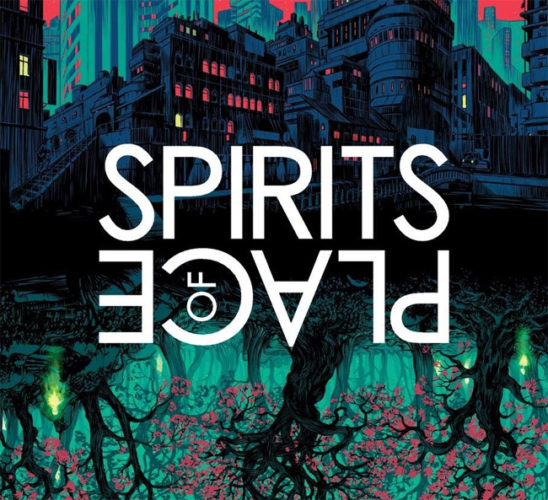
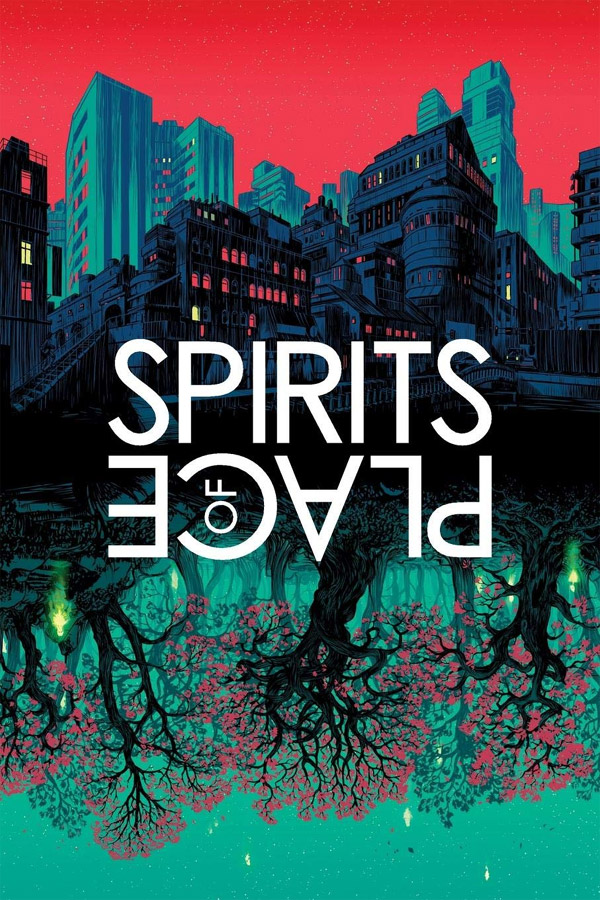
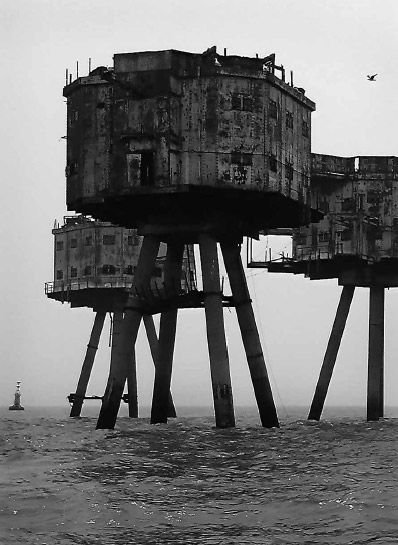
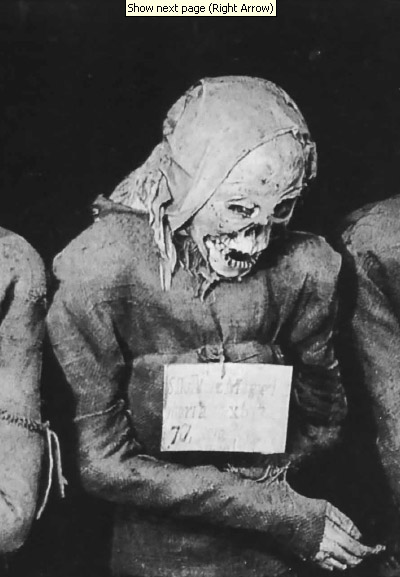
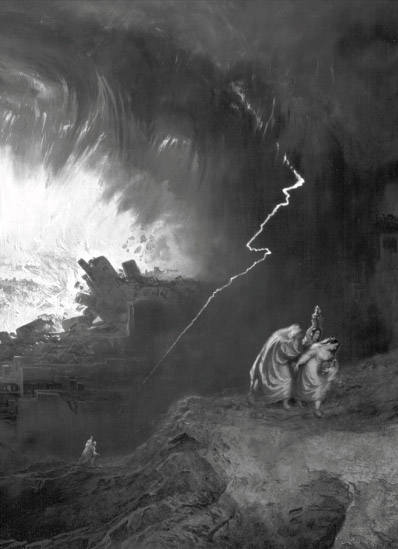
Permalink
Late, I know (not as late as the whole review, which was 3 years overdue, but still), but feel I need to correct myself. In the piece I describe Warren Ellis as ‘mighty’. Now, I’ve enjoyed his work for many years, and he is a seriously good writer, but turns out to be a bit of a shit when it comes to his sexual relationships. Over 60 women and non-binary people allege serious predatory and manipulative behaviour on his part. They’ve gathered their testimonies on this website: https://www.somanyofus.com/
Having read through it, I can’t in all conscience let my big up of the man stand. There’s a debate to be had around cancel culture, and whether or not an artist’s private life should or can be equated with their work or judged separately. But I feel the need to stand with Ellis’ victims. I also can’t help but feel that he’s really let his fans down, as well as his fellow creatives with whom he helped create some of the best comics (and in the case of Spirits of Place, books) I’ve ever read. His mealy-mouthed excuse for an apology only served to highlight how sorry he isn’t. Poor show, Warren.